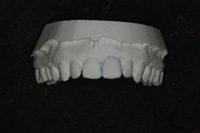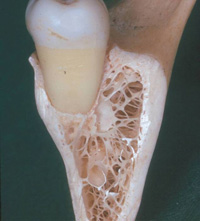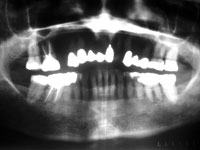 In the early days of your dental practice, you probably equated success with satisfying a steady stream of patients whose problems you could readily fix. Back then, you worked mainly as a tooth carpenter—repairing broken teeth, bleeding gums, and caries—and you needed only a simple business model and modest leadership skills. Your greatest challenges involved attracting patients, retaining staff, and understanding business finance.
In the early days of your dental practice, you probably equated success with satisfying a steady stream of patients whose problems you could readily fix. Back then, you worked mainly as a tooth carpenter—repairing broken teeth, bleeding gums, and caries—and you needed only a simple business model and modest leadership skills. Your greatest challenges involved attracting patients, retaining staff, and understanding business finance.
THE LEADERSHIP CURVE
What you may not have learned in hundreds of hours of continuing education is a fundamental truth regarding advanced restorative dentistry: the greater the complexity of care, the greater the demand on leadership skills. It is leadership, in combination with clinical knowledge, which elevates you to the peak of complete dentistry.
The graph shows clinical skills in gray, organizational skills in blue, and relationship skills in red. The vertical axis of The Leadership Curve shows the leadership level required, and the horizontal axis shows the clinical range—the level of care you want to provide.
ORGANIZATIONAL/SYSTEMS SKILLS
Facility/Technology
The appearance of your office should reflect the level of expertise you offer. To attract patients who seek advanced restorative care, your facility must be appealing and meticulously clean. High-tech equipment can help, but it is not mandatory—many complete-care dentists do well without the latest and greatest technology, but their surroundings still make it clear that they offer excellence at every level.
Fee Structure
Practicing advanced restorative dentistry with the same fee structure as “tooth” dentistry will undercut your profitability. The time and skill required increase for rehabilitative cases, as do the laboratory support needed for planning, final restoration, and the occasional remake. To be profitable, you must develop a new fee structure to reflect these realities.
Patient Financing
Money is the most emotional topic in a dental office, and dealing with it well demonstrates a high level of empathy, common sense, and patient advocacy. Financing eases the emotional impact of high costs for the patient and your team.
Customer Service
Advanced restorative patients generally purchase high-quality products and services in their everyday lives. They are accustomed to the warm and personal customer service that accompanies high-ticket items. Patients going through the discomfort, inconvenience, and expense of complex-care dentistry deserve gracious hospitality, custom-tailored service, and a high degree of competence from everyone on your team.
Co-therapist
Many dentists find that a successful, mature practice in complete dentistry requires a colleague to share the load. Think of the additional dentist as a co-therapist—someone who can support you in the everyday clinical and management challenges. For example, the co-therapist can lead your recare program, provide simple restorative and operative care, and handle procedures you currently refer.
RELATIONSHIP/COMMUNICATION SKILLS
Team
First and foremost, surround yourself with the right people. Then invest in their future with you by providing personal and professional development and expressing appreciation for their work. Bear in mind that if leadership relies on people to put systems in place, implementing complete care depends on your ability to establish a team that grasps your vision and shares your excitement. Of all the elements on the The Leadership Curve, the most continual investment will be in team development.
Case Acceptance
The hardest lesson to learn about case acceptance for complex dentistry is that the methods that work for tooth carpentry do not necessarily work for complex care. Patients at the fix-it level are buying a commodity—filling or cleaning—with modest fees and minimal risks. When patients need rehabilitative care, however, their buying decision is influenced heavily by the relationship they have with you and your team. They also base their decision on how your proposed treatment fits into their life in terms of their time, budget, work, family, and other obligations.
Insurance Freedom
If your insurance contracts prohibit you from collecting the fees necessary for profitability, you may want to gain the freedom to do so. Before disengaging from any insurance contracts, your team needs to communicate personally with each affected patient. We have found that a short one-on-one conversation a few months before the change works best to maintain the loyalty of the patient to the practice. Reassure them that you still honor their insurance, but will be handling business differently with their insurance company.
Laboratory Collaboration
Like every other part of your complex restorative practice, you must up the ante when it comes to laboratory support. As a provider of complete care, you must partner with expert laboratory technicians who understand and support your skill level and can deliver the quality you envision when you present care. Doing so comes with a price tag—and not just a financial one. The laboratories that truly deliver excellence in precision, occlusion, and beauty require more detailed information from you and more time to produce the superior product you need to complete a case.
Specialists Network
As the clinical complexity of your care increases, so does your reliance on dental specialists to help you deliver optimal care. Working with specialists can, however, complicate communication and unintentionally sabotage treatment. The key to keeping patients happy is for the general dental team to prepare them well for the referral appointment.
Marketing
Your best advanced restorative patients provide the most useful insights for your marketing plan. They can tell you what they read, who they listen to, and what makes them happy (and uneasy) about your dentistry. Combine their input with the support of an experienced marketing company to create messages for internal marketing efforts, print and broadcast advertising, and publicity. Keep in mind that your messages reflect on all dentists, not just on you. Be sure your messages honor the profession, offer important solutions for the patient, and work for your practice.
Stewardship
We believe the highest level of success occurs when you realize that your own achievements are not enough. The successful advanced restorative dentist has accumulated an enormous amount of information and experience that cannot be transferred through dental schools, books, or multimedia. The pinnacle of advanced clinical care comes from sharing the important lessons you have learned with other dentists and team members.
Dr. Homoly is a world-class leader in dental education. As a comprehensive restorative dentist and acclaimed educator for more than 20 years, he speaks with the voice of experience. His innovative and energetic approach to coaching enriches dentists worldwide. He is author of the best-selling books Dentists: An Endangered Species and Isn’t It Wonderful When Patients Say “Yes.” He is a frequent contributor to dental journals and is a top-rated speaker, consultant, and coach. Dr. Homoly is president of Homoly Communications Institute. Its focus is to coach high-performance dental teams and advance communication in dentistry worldwide. His unique process helps dentists master their practice, giving them more freedom in work and life. He can be contacted at (800) 294-9370 or visit his Web site at paulhomoly.com.
Disclosure: The Leadership Curve is a trademark of Homoly Communications Institute, all rights reserved.
Dr. Maples has led a full-time comprehensive dental practice in Holt, Mich, for 17 years. In addition, she teaches leadership, business principles, marketing, and communication skills to dentists throughout the country. Dr. Maples earned her dental degree from the University of Michigan and her master’s degree in business from Madonna University.











